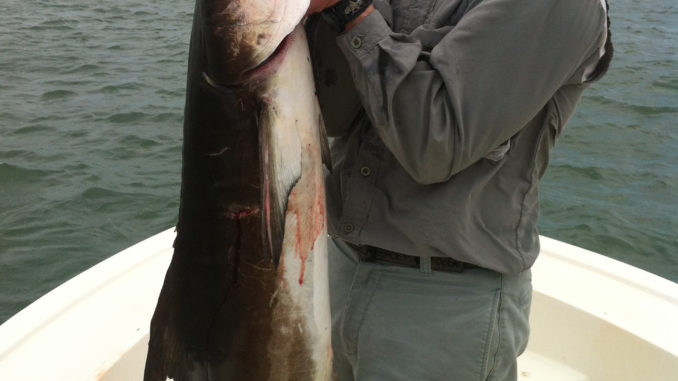
The latest stock assessment on cobia in the South Atlantic was released this past January. It took years to compile, and approximately half of the 400 pages of information came from the S.C. Department of Natural Resources. Some of the findings were extremely interesting.
It is a common belief that cobia migrate north from the Florida Keys and make a stop at South Carolina in the spring, but genetic research shows that’s not the case. The report indicates a split between South Atlantic and Gulf of Mexico stocks around the Georgia-Florida border, “because genetic data suggested that the split is north of the Brevard/Indian River County line, and there was no tagging data to dispute this split.”
Also, the cobia that come inshore to the Port Royal Sound and Broad River each spring are not the same, genetically, as those found offshore, meaning that fish caught offshore are not staging, either preparing to enter or just leaving inshore waters as many anglers have thought in the past.
Perhaps of most interest to anglers and researchers is the current population and trends of cobia. Little doubt exists that recreational angling has some effect on the population, but the extent was unknown before the assessment, which classified the cobia population as viable, on a slight decline, but “not overfished.”
According to the study, the current catch rates is not an issue, but as more anglers are drawn to the sport and fishing techniques improve, the possibility of overfishing increases as well.
The assessment predicts that South Carolina’s southernmost coast gets larger numbers of fish earlier than areas far north, including Georgetown and Little River. The assessment documents that cobia move into nearshore waters when water temperatures reach 68 to 77 degrees, so fisherman can extend their season by moving northward along the coast, following the peak of the migration in each area.
Justin Yost, a biologist with the SCDNR who compiled much of his agency’s cobia research, said the input of fishermen is needed more than ever.
“The DNR needs the help of sportsman to keep their programs afloat, and the work with South Carolina cobia is a shining example of anglers stepping up and pitching in to make a difference — but that doesn’t mean more help isn’t desperately needed,” he said.
The report is available online at: www.sefsc.noaa.gov/sedar/Sedar_Workshops.jsp?WorkshopNum=28



Be the first to comment